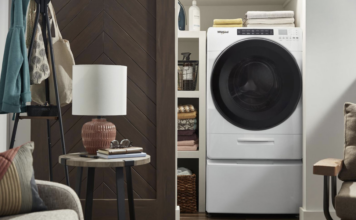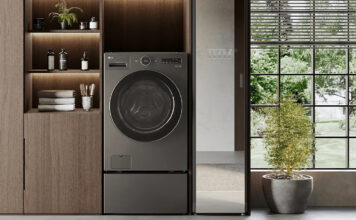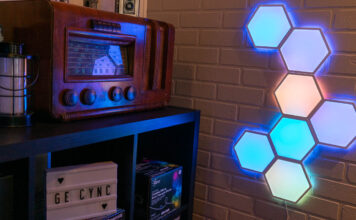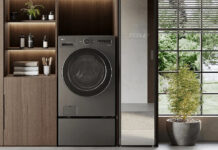
Appliances are some of the most expensive items you’ll ever buy, so you want to make sure you’re choosing correctly. But how do you know what to pick, what considerations to weigh, and how to guarantee you’ll be happy with your purchase? It starts with research.
 Do Your Research
Do Your Research
Before you shell out, you’ll want to make sure you know what you’re getting. That often begins with narrowing your choices to a few brands, or conversely, picking out a must-have features. Do you want a sparkling water dispenser in your new fridge? There’s limited choice. Are you a baker who dreams of a steam oven for perfect breads? You’re going to have only a couple options. Are you just looking to replace a dead dishwasher with something cheap and basic? You’ll probably have a wealth of options. Decide what’s important to you and narrow your choices by seeking out options online. That will help get you started.
Go Big or go home? Choosing Size and Location
Picking size in new appliances almost always comes down to one question: Are you renovating or re-doing your kitchen, or are you replacing appliances in an existing layout or footprint?
Existing Space
If you’re replacing appliances in an existing floorplan, you’re going to be limited by the space and openings you already have. You can’t really opt for a bigger range, unless you start pulling out cabinets, and we call that a reno! So dealing with the space you have is going to dictate what new options you can pick from. A 30” opening for a stove is going to stay 30” no matter what. If a renovation isn’t in your future, then you’ll need to keep the location-specific parameters of the appliances in mind. For example, if you don’t have plumbing in your existing refrigerator’s location, and yet you opt for a new fridge with an automatic ice maker and water cooler built-in, you’re wasting money. There’s no point in paying for upgrades in a fridge if you can’t use the features. .
Renovation Rejuvenation!
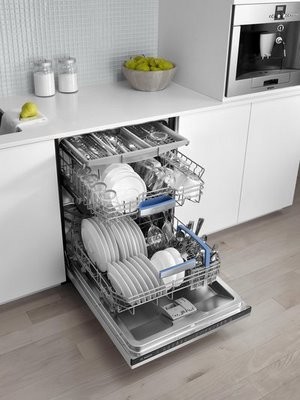
On the flip side, if you’re renovating, you have an endless amount of choices. With most renos, you’ll likely pick your appliances out before you do anything else, and build the cabinetry plan around them. That means if you want the largest fridge money can buy, you can go for it. If you’re looking for double dishwasher for a busy family, you can plan around that. Double wall oven? You can factor it into your plans, with few limitations. Renovators also have many more options in terms of locating the appliances too; with some considerations. If you’re putting in a gas stove to replace an old electric range for example, you’ll have to make sure it’s in an area where a tradesperson can run a gas line; or consider how much it will cost to make it work. If you’re adding an island and want the sink and dishwasher there, you’ll have to think about plumbing, and perhaps moving or extending pipes to service your new island. Will it be worth the cost?
Compatibility, or “Matchiness”
Are you the type who wants your socks to match your tie? Then you might be the type of person who needs their various appliances to match too. It’s not uncommon for people to want all their appliances to be manufactured by the same company, but prevailing thinking these days appears to be that’s not necessary. Since appliances are the workhorses of the kitchen, you’ll want to make sure they do what you need them to, rather than worry if they all have the same style handle, or the logo plate in the same spot. It’s obviously smart, and makes sense for the appliances to all be the same finish (whether that’s stainless steel, black, or white, or any number of variations on those themes). But don’t feel like you need to buy a dishwasher you don’t think does the best job, just because it’s the same name as your top fridge pick. Select appliances that work hard, are durable and good value, and that your research shows are the best for the money, with the features you both want and need.
I personally don’t care about brand matching. I research the heck out of major purchases like appliances, and if we green-light an upcoming reno I’ll be picking appliances based on ratings, certain must-have features, and value, not to mention what might come up on sale in the months before demolition. While I will select all our appliances in the same finish, it won’t matter a bit to me if they’re all by different manufacturers
 5 tips: All those other things you forget!
5 tips: All those other things you forget!
A friend of mine once bought a brand new fridge. He’d taken a cabinet out in order to make room for his fancy-pants extra-wide fridge that came with bells and whistles to spare. He was practically dancing on delivery day, but when the refrigerator of his dreams arrived, it became a nightmare when it was obvious there was no way to get the fridge in through his doors. After a couple hours of removing doors from hinges, and trying to MacGyver solutions, he had to admit defeat and have it sent back. So here’s a few tips to help keep you from making costly mistakes:
- Measure, Measure, Measure! Measure your door openings, stair openings, even hallways to make sure you can get your new purchase home and into its place. Also: Measure the openings for your appliances. Then measure them again. Write down the measurements, and bring them to the store.
- Make sure you inquire about, and leave room for any airflow space, particularly around ovens and fridges.
- Consider the appliances’ door swings: if your extra wide refrigerator opens up, and smashes directly into the kitchen island, or worse yet, it won’t open all the way because something is impeding it, you’re going to hate both the new appliance and your kitchen. Measure twice, and account for extra space needs. Similarly, if no one can get through the kitchen when the dishwasher is open, it’s going to drive you nuts. Plan carefully, and pick the right appliance for your space.
- Check left/right door swings on refrigerators. Pick the correct side, or be sure you can switch the door swing.
- Don’t go too trendy. Trends fade: that’s why we call them trends. Choose finishes that will last. Some features may sound great, but ask yourself how often you’ll really use them.
Accents: colour outside the lines, or match it up!
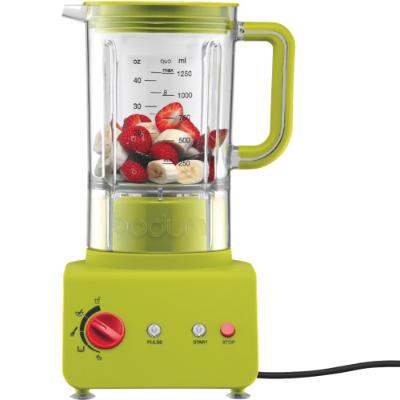 Today, manufacturers are hip to making sure even small appliances can be upgraded to match the big ones. That means if your appliance colour scheme is stainless steel, you can opt to get your Cuisinart Stand Mixer in a matching shade. Do you use your toaster or blender daily and leave them out in full view on the counter top? You can either match them to the big appliances, or take on a new trend where smaller appliances are popping up in fun accent colours.
Today, manufacturers are hip to making sure even small appliances can be upgraded to match the big ones. That means if your appliance colour scheme is stainless steel, you can opt to get your Cuisinart Stand Mixer in a matching shade. Do you use your toaster or blender daily and leave them out in full view on the counter top? You can either match them to the big appliances, or take on a new trend where smaller appliances are popping up in fun accent colours.
If you have a cream and wood kitchen, you can add a pop of colour with red; like this Brentwood Sandwich Maker. Maybe you’ve gone for a darker finish on cabinets, and black appliances, so you want to lighten up the countertops with white small appliances, like this white Bodum Bistro Toaster. Or perhaps you’re looking to give your kitchen some more life with eco-friendly features, plants (or a living wall?!) and some pops of bright green, like this Bodum Blender. Working colour magic has never been more possible.
If you’re doing your research, the Plug-In Blog is a great place to start. If you’re looking for a new fridge, for example, check out “From Mad Men-era features to today’s high tech fridge options” which contrasts features that were once must-haves with what’s new in fridge-tech today. Is a stove going to be your next purchase? There’s are all kinds of helpful info in Ovens 101 and Dishwashers 101 to assist you too.
Do you have an appliance mistake that others could learn from? Or a suggestion for new appliance purchasers? Please share your wisdom in comments.

